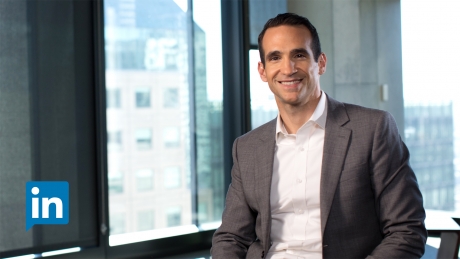
Dubbed the “The Prophet of Habit-Forming Technology” by the M.I.T. Technology Review, Nir Eyal writes and teaches about the intersection of psychology, technology, and business. He’s spent several years consulting for the tech industry, teaching techniques he developed by closely studying how Silicon Valley giants operate. He’s also the author of the Wall Street Journal bestselling book, Hooked: How to Build Habit-Forming Products.
“I started a couple of tech companies. Gaming companies are experts and manipulating you into how to keep playing.”
“Habits really matter. I wanted to allocate my human capital. I knew habits were going to be a big deal. I was trying to figure out how tech companies got us hooked.”
“The Hooked Model has 4 steps, Triggers (external triggers and internal), Action( simple behavior like scrolling a feed), Reward (how it makes us feel), Investment (product companies are co-creating products with the user through data). Now you’re not using the externally, it’s also internal. Purely out of habit.”
“The title ‘Hooked’ is read bait, I want people to improve people’s lives. Far too many products suck, versus too many products suck us in. The vast majority of apps in the App Store stink.”
“What comes at the end of GoT is a cliffhanger. It’s an emotional investment that you’ve made.”
“We cannot separate what makes something fun from what makes it addicting. It’s a function of progress. Do we want to go back before the iPhone? Not really?”
“Persuasion vs. coercion-both are forms of manipulation. TV lets you be manipulated, that’s persuasion, same with a fitness app. People want to do it, tech is helping. Coercion is when you get people to do things they don’t want to do. It’s unethical, it’s bad for business.”
“The common misconception outside of Silicon Valley is that the founders got lucky. Nothing could be further from them truth. That’s part of good product design. Symbolic systems is the integration of psychology and technology.”
“What’s the habit you want to change? If you don’t start with that, everything falls apart.”
“It’s important to remember to supplement not replace our personal relationships. When we came here we didn’t know anybody. Why don’t we do what they did on Friends, so we put flyers in everybody’s mailbox to come by and nobody came in our entire building. I was miserable. So we had to find other outlets. We started a small group of couples and started a kibbutz. No weather, no sports, one person was assigned to bring the topic of conversation. We had to exclude distraction, tech and kids. What we lost when we had kids. We lost half our adult friends. Kids can come but they can’t pull you away. It was a real bedrock of our life.”
Curt Steinhorst is on a mission to rescue us from our distracted selves. Having spent years studying the impact of tech on human behavior, Curt Steinhorst is a distraction expert and founder of Focuswise, a consultant agency that equips organizations to overcome the distinct challenges of the constantly-connected workplace. Curt’s also the author of Can I Have Your Attention? Inspiring Better Work Habits, Focusing Your Team, and Getting Stuff Done in the Constantly Connected Workplace.
“The book went straight to Number 1 on Amazon in our category, which is really exciting.”
“It’s really easy to acknowledge the challenge. What are ways, as leaders in particular, to get productivity out of people who have Netflix when they’re supposed to be looking at a spreadsheet.”
“I’m a Distraction Expert because I’m the most easily distracted. It’s a merger of personal and professional traits. I have ADD. I jumped into the speaking world and was coaching people. Over time my personal ADD was face-to-face with my work in communications. It became the only conversation clients wanted.”
“I teach teams how to work and think differently.”
“Multi-tasking is the best option, but we need to know the moments we have to be focused.”
“Biggest challenge is the volume of communication. We send messages without consequence when we get frustrated when messages come in without consequences.”
“When we add social messaging it doesn’t tend to reduce email. It increases digital communication.”
“People blame Millennials but the older generations are responsible for the synonym that availability equates to hard work.”
“A big percentage of the workforce feels exhausted.”
“Multi-tasking is not a myth depending on what tasks your trying to pair.”
“When you have your headphones in and listening to white noise, great. A podcast and work, neither is benefitting.”
“An employer has to set ground rules. When should we be present. How to delineate between important messaging and none.”
“The employee needs to create space for the not-available, they have to differentiate what is not important.”
“Inbox Zero is not important. It can be the best way to avoid hard work.”
“I use a program called Freedom which turns off the internet.”
“We live in a world that is the finite but have the infinite available to us. We’re going to avoid the thing that is infinite to spend time with the finite. (i.e. a Seinfeld episode over playing a game my son finds fun).
“Gen X per hour spends more time per week on digital media, and Boomers spend more time on tv. Every single person of every single age are moving toward the digital age.”










 NIR EYAL
NIR EYAL CURT STEINHORST
CURT STEINHORST